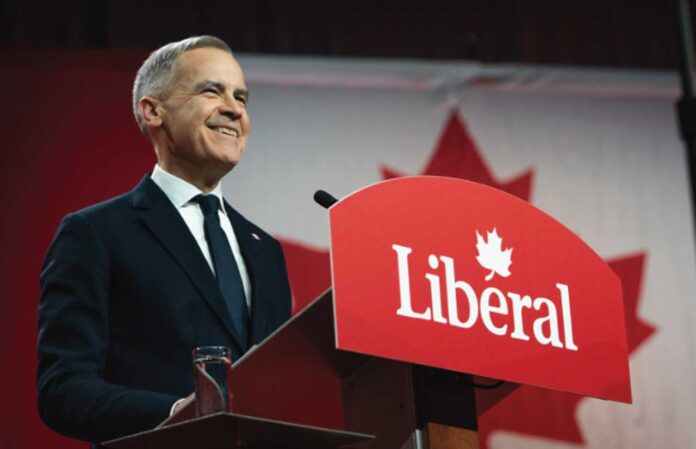Liberal leader unveils an ambitious energy plan focused on security, trade diversification, and clean growth — a notable shift from the Trudeau government’s record on major energy projects
CALGARY, AB – Mark Carney, newly appointed leader of the Liberal Party, has presented a national energy strategy aimed at positioning Canada as a global energy superpower. His plan emphasizes a balance between traditional and clean energy, with a focus on energy security, trade diversification, and long-term economic competitiveness.
Carney stated that “Canada has a tremendous opportunity to lead in both clean and conventional energy,” pledging to accelerate the development of projects that are deemed in the national interest.
The plan introduces major commitments such as:
-
A First and Last Mile Fund to connect critical mineral projects to national and global supply chains.
-
A streamlined federal review system that would allow major projects to be approved within two years.
-
Doubling the Indigenous Loan Guarantee Program to encourage Indigenous equity ownership in infrastructure and energy development.
-
Development of an East-West electricity grid to strengthen domestic energy sovereignty and reliability.
Contrast With Trudeau-Era Energy Project Record
Carney’s proposals represent a strategic pivot from how energy projects were handled under Justin Trudeau’s leadership. While Trudeau’s government made significant investments in climate action and clean energy, it also faced criticism — including from industry stakeholders, Indigenous groups, and provincial governments — for delays, regulatory uncertainty, and cancelled or stalled energy infrastructure projects.
Key Examples:
-
The Northern Gateway pipeline was cancelled in 2016, despite regulatory approval and industry support.
-
The government purchased the Trans Mountain Pipeline in 2018 to keep it alive after investor concerns about regulatory uncertainty — the project has faced ongoing delays and rising costs, now projected to exceed $30 billion.
-
The Energy East pipeline was ultimately cancelled in 2017, with TransCanada citing changing regulatory expectations as a factor.
-
The Bill C-69 legislation, which overhauled Canada’s environmental review process, was criticized by industry and several provinces for increasing uncertainty and project timelines.
By contrast, Carney is proposing a “One Project, One Review” model with fixed timelines, a more industry-aligned move that appears to acknowledge some of the regulatory friction that marked the Trudeau years.
Comparison With Conservative and NDP Energy Policies
Conservative Party (Pierre Poilievre):
-
Supports removing barriers to pipeline and energy infrastructure development.
-
Promises faster project approvals and elimination of federal carbon pricing.
-
Pledges to adopt the energy sector’s five key asks, including trade diversification and regulatory streamlining.
New Democratic Party (Jagmeet Singh):
-
Focuses on transitioning away from fossil fuels by ending oil and gas subsidies.
-
Proposes retrofitting 3.3 million homes for energy efficiency.
-
Emphasizes climate resilience, green job creation, and affordability for working families.
Impact on Thunder Bay and Northwestern Ontario
The competing visions from the three parties hold particular relevance for Northwestern Ontario, including:
-
Liberal Plan: Carney’s focus on critical minerals aligns with the Ring of Fire development potential near Thunder Bay. The proposed trade and energy corridor could improve regional infrastructure and connectivity.
-
Conservative Plan: Accelerated project approvals may support conventional energy and mining developments in Northern Ontario, encouraging private-sector investment and reducing regulatory lag.
-
NDP Plan: The retrofitting strategy could lower energy costs for Thunder Bay residents while creating jobs in trades and green construction sectors.
Conclusion
Mark Carney’s proposed energy plan signals a clear departure from the regulatory-heavy approach of previous Liberal governments. By emphasizing faster project approvals, trade corridors, and Indigenous partnerships, the strategy seeks to reconcile Canada’s environmental commitments with global energy competitiveness. Whether it will distance the party from past challenges in delivering major infrastructure projects remains to be seen — but it sets up a stark policy contrast as the next federal election looms.





